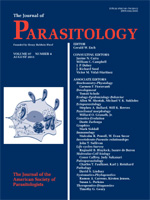Cucullanus dodsworthi Barreto, 1922 was originally described from the checkered puffer fish, Sphoeroides testudineus (Linnaeus), from Brazilian waters. New material of this nematode species was recovered from the same type host species from Mexican waters off the Yucatán Peninsula. This material was compared with Brazilian specimens. Although Mexican material closely resembles the original description of C. dodsworthi in general appearance, previously undescribed characters, as observed by light and scanning electron microscopy, are described for the first time in this species from both Brazilian and Mexican specimens. These characters include lateral body alae or conspicuous lateral fields that begin in the cervical region and end anterior to first pair of adcloacal papillae in males and at the anus level in females, cephalic and caudal alae absent; presence of pseudobuccal capsule with simple buccal frame well sclerotized with dorsal arrow structures, lateral structures, and lateral reniform structures; deirids, excretory pore, and postdeirids; slight anal protuberance in both sexes, unpaired precloacal papilla in males, phasmids near pair 10 in males and near tail tip in females; female with protruding vulvar lips and smooth eggs. In the absence of better descriptions of this genus, it can be concluded that C. dodsworthi is the only species of marine Cucullanus from the Americas that possesses lateral body alae. Molecular characterization of C. dodsworthi with SSU (18S) and ITS2 rDNA genes is included. A preliminary genetic comparison between SSU rDNA of C. dodsworthi, Truttaedacnitis truttae (Fabricius, 1794), and Dichelyne mexicanus Caspeta-Mandujano, Moravec and Salgado-Maldonado, 1999 places C. dodsworthi as a putative sister taxon to T. truttae. The finding of C. dodsworthi in Mexican marine waters also represents a new geographical record.
BioOne.org will be down briefly for maintenance on 12 February 2025 between 18:00-21:00 Pacific Time US. We apologize for any inconvenience.
How to translate text using browser tools
1 August 2011
Redescription and Genetic Characterization of Cucullanus dodsworthi (Nematoda: Cucullanidae) From the Checkered Puffer Sphoeroides testudineus (Pisces: Tetraodontiformes)
Hugo H. Mejía-Madrid,
María Leopoldina Aguirre-Macedo
ACCESS THE FULL ARTICLE

Journal of Parasitology
Vol. 97 • No. 4
August 2011
Vol. 97 • No. 4
August 2011




